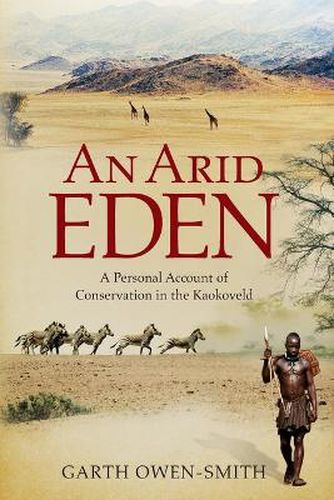Readings Newsletter
Become a Readings Member to make your shopping experience even easier.
Sign in or sign up for free!
You’re not far away from qualifying for FREE standard shipping within Australia
You’ve qualified for FREE standard shipping within Australia
The cart is loading…






This title is printed to order. This book may have been self-published. If so, we cannot guarantee the quality of the content. In the main most books will have gone through the editing process however some may not. We therefore suggest that you be aware of this before ordering this book. If in doubt check either the author or publisher’s details as we are unable to accept any returns unless they are faulty. Please contact us if you have any questions.
Garth Owen-Smith has spent almost his entire working life fighting – not against a conventional enemy but against official ignorance, harsh climatic conditions, poachers and other enemies of Africa’s fast-diminishing wildlife. In the process he has lived and worked in a number of countries but his chosen battlefield has always been the most challenging place of all: the harsh, beautiful and almost unknown Kaokoveld in north-western Namibia, his ‘Arid Eden’. He chose sides early on, when he spent two youthful years in the Kaokoveld and not only developed a deep affinity with the indigenous Himba, Herero and Damara pastoralists but realised that they had developed the ideal form of nature conservation, a situation in which humans and their livestock could live in equilibrium with wild game, so that there was room for all. In 1970 he was thrown out of the Kaokoveld as an alleged security risk, then spent a year looking into conservation and the treatment of indigenous peoples in Australia, farmed for two years in Rhodesia, and did pioneering work in conservation education for black youths in South Africa. He finally managed to get back to South West Africa in 1978, and from there embarked on his life’s work, to save the remnants of the Kaokoveld’s rich wildlife, devastated by a variety of illegal hunters. And he succeeded, although it took him and his partner, Dr Margaret Jacobsohn, 27 years. They have won some of the world’s major conservation awards, north-western Namibia is a popular tourism destination and the Kaokoveld’s wildlife has come back from the brink of virtual extinction, and thousands of people have benefited from the links they have forged between community development and natural resource management.
$9.00 standard shipping within Australia
FREE standard shipping within Australia for orders over $100.00
Express & International shipping calculated at checkout
This title is printed to order. This book may have been self-published. If so, we cannot guarantee the quality of the content. In the main most books will have gone through the editing process however some may not. We therefore suggest that you be aware of this before ordering this book. If in doubt check either the author or publisher’s details as we are unable to accept any returns unless they are faulty. Please contact us if you have any questions.
Garth Owen-Smith has spent almost his entire working life fighting – not against a conventional enemy but against official ignorance, harsh climatic conditions, poachers and other enemies of Africa’s fast-diminishing wildlife. In the process he has lived and worked in a number of countries but his chosen battlefield has always been the most challenging place of all: the harsh, beautiful and almost unknown Kaokoveld in north-western Namibia, his ‘Arid Eden’. He chose sides early on, when he spent two youthful years in the Kaokoveld and not only developed a deep affinity with the indigenous Himba, Herero and Damara pastoralists but realised that they had developed the ideal form of nature conservation, a situation in which humans and their livestock could live in equilibrium with wild game, so that there was room for all. In 1970 he was thrown out of the Kaokoveld as an alleged security risk, then spent a year looking into conservation and the treatment of indigenous peoples in Australia, farmed for two years in Rhodesia, and did pioneering work in conservation education for black youths in South Africa. He finally managed to get back to South West Africa in 1978, and from there embarked on his life’s work, to save the remnants of the Kaokoveld’s rich wildlife, devastated by a variety of illegal hunters. And he succeeded, although it took him and his partner, Dr Margaret Jacobsohn, 27 years. They have won some of the world’s major conservation awards, north-western Namibia is a popular tourism destination and the Kaokoveld’s wildlife has come back from the brink of virtual extinction, and thousands of people have benefited from the links they have forged between community development and natural resource management.